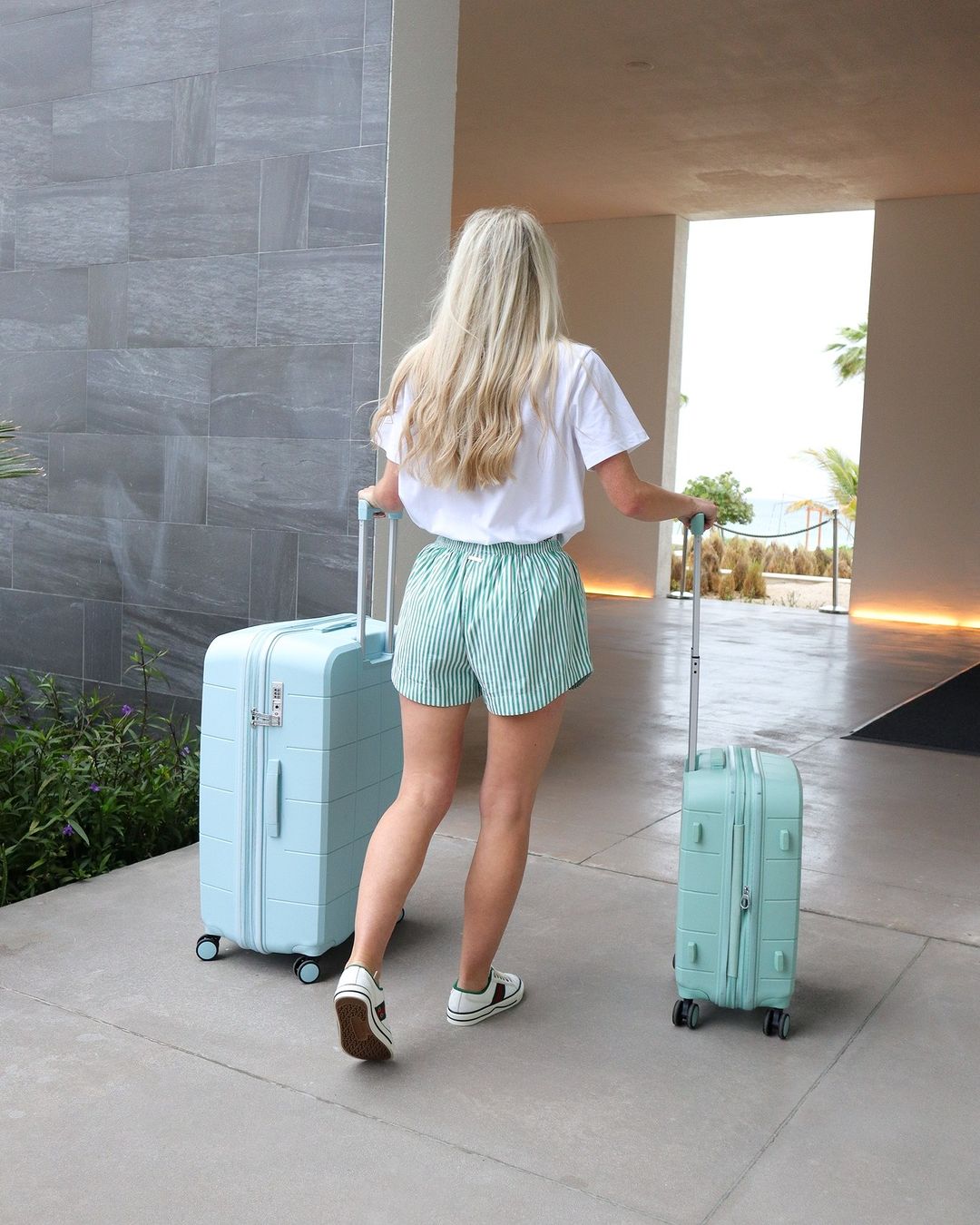
Spinner vs. Roller Luggage: What’s the Real Difference?
, by Carolina UC, 6 min reading time

, by Carolina UC, 6 min reading time
Confused between spinner and roller luggage? Discover the real differences in wheels, mobility, durability, and more—so you can pick the perfect suitcase for your travels.
When it comes to choosing the right luggage, most of us focus on size, weight, or style—but what about the wheels? That might sound like a minor detail, but choosing between spinner and roller luggage can make or break your travel experience. Each type offers its own pros and cons depending on how, where, and how often you travel.
Let’s unpack the real differences between spinner and roller luggage so you can glide through your next trip with ease.

The most obvious difference? Spinners have four wheels, while rollers have two. Spinner wheels rotate 360 degrees, allowing for full manoeuvrability. Roller bags, on the other hand, feature two fixed wheels that tilt and roll on an angle.
This one detail affects everything from how you move through airports to how much strain you put on your body.
Spinners are built for effortless gliding in all directions, which makes weaving through crowded terminals or narrow plane aisles a breeze. You can push, pull, or even spin the suitcase beside you.
Roller bags require you to pull the suitcase behind you, which works well on flat surfaces but limits your range of movement. Not ideal when dodging queues or chasing gates.

Spinners shine on smooth indoor floors—think polished airport tiles or hotel lobbies. But take them outside on cobblestones, gravel, or uneven pavement, and they’ll struggle. Those small swivel wheels just aren’t made for rough terrain.
Rollers, however, handle rougher surfaces better. Their larger, fixed wheels are sturdier and more suited to dragging across pavements, kerbs, or even grass.
Navigating tight spaces? Spinners win. You can roll them sideways, forwards, or backwards, which means less lifting and twisting in cramped lifts, train aisles, or packed terminals.
Rollers need clear space behind you to be pulled, so tight corners or crowded settings can be awkward. It’s not impossible—but it’s not as smooth.

Pulling a heavy roller bag for long stretches can really strain your wrist, shoulder, and arm. Over time, especially during long layovers or cross-terminal treks, it adds up.
Spinners reduce strain by letting you push rather than pull. It’s a more ergonomic option that spreads the weight evenly, especially useful if you're carrying other bags or travelling long distances on foot.
Rollers carry weight on two wheels, meaning they rely on your hand to balance them as you pull. That’s fine if the suitcase isn’t overloaded—but load it up, and you’ll feel it.
Spinners evenly distribute weight across four wheels, which makes them feel lighter, even when full. The bag basically floats along with you.
Here's where rollers have the upper hand. When you stop moving, a roller bag stays put. No runaway wheels or sudden shifts.
Spinners, thanks to their freely rotating wheels, can slide away on inclined surfaces or in busy terminals. You might need to lean it against something or engage a wheel lock (if it has one).

Because spinner wheels usually protrude from the base, they can slightly reduce packing capacity. Those few centimetres make a difference when trying to cram everything in.
Rollers often have recessed wheels, which don’t take up as much exterior space—giving you a bit more room inside the same size bag.
Durability largely depends on build quality, but in general, spinner wheels are more exposed and prone to breakage. Since they swivel and stick out, they’re more likely to get knocked off during rough handling.
Roller wheels are sturdier and better protected, making them more resilient to wear and tear. If you’re a frequent flyer or rough with your luggage, rollers might last longer.

Spinners are great for airport-heavy trips, city travel, and short hotel stays—especially where everything’s flat and easy to navigate.
Rollers are better suited to rugged environments, road trips, or places with lots of walking and uneven surfaces. They’re also ideal for checked baggage that gets tossed around.
No contest here—spinners glide through airports like a dream. Whether you're in a rush or taking your time, being able to push your luggage beside you frees up your hands and makes the journey less stressful.
Rollers, while fine, can become a hassle in busy terminals, especially if you’re navigating crowds, escalators, or narrow boarding bridges.

Spinners tend to be a bit more expensive due to the extra engineering and flexibility. You’re paying for convenience and comfort.
Rollers are generally more affordable, though prices can vary depending on brand and materials. If you’re on a budget or don’t travel often, a roller may offer better value.
Many modern travellers prefer spinners for the comfort and ease they provide, especially with carry-ons. You’ll often see businesspeople, families, and frequent flyers wheeling them around.
However, seasoned adventurers and practical packers sometimes stick with rollers for their reliability and simplicity—especially if travelling to less polished destinations.
In the long run, the right choice comes down to your travel habits and priorities. If you're all about ease and slick airport transitions, spinners on luggage are hard to beat. But if you’re more concerned about durability and handling tough ground, rollers might serve you better.
Owning one of each isn’t a bad shout either—carry-on spinner for flights, large roller for the hold.

ON YOUR ORDER WHEN YOU SIGN UP FOR EMAIL